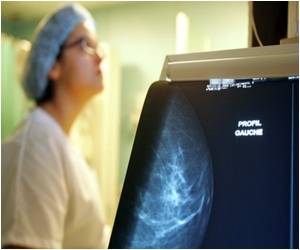A new study published in BMJ finds annual screening in women aged 40-59 does not reduce mortality from breast cancer beyond that of physical examination or usual care.

Women aged 40-49 in the mammography arm – and all women aged 50-59 in both arms – also received annual physical breast examinations. Women aged 40-49 in the control arm received a single examination followed by usual care in the community. During the 25 year study period, 3,250 women in the mammography arm and 3,133 in the control arm were diagnosed with breast cancer and 500 and 505, respectively, died of breast cancer. "Thus, the cumulative mortality from breast cancer was similar between women in the mammography arm and in the control arm," say the authors.
At the end of the five year screening period, an excess of 142 breast cancers occurred in the mammography arm compared with the control arm, and at 15 years the excess remained at 106 cancers. This, say the authors, implies that 22% of the screen detected invasive cancers in the mammography arm were over-diagnosed – that is, one over-diagnosed breast cancer for every 424 women who received mammography screening in the trial. They stress that these results may not be generalisable to all countries, but say, in technically advanced countries, "our results support the views of some commentators that the rationale for screening by mammography should be urgently reassessed by policy makers." While they believe that education, early diagnosis, and excellent clinical care should continue, they conclude that annual mammography "does not result in a reduction in breast cancer specific mortality for women aged 40-59 beyond that of physical examination alone or usual care in the community."
In an accompanying editorial, Dr Mette Kalager and colleagues believe that long term follow-up does not support screening women under 60.
They agree with the study authors that "the rationale for screening by mammography be urgently reassessed by policy makers," but point out that this is not an easy task "because governments, research funders, scientists, and medical practitioners may have vested interests in continuing activities that are well established."
Source-Eurekalert















